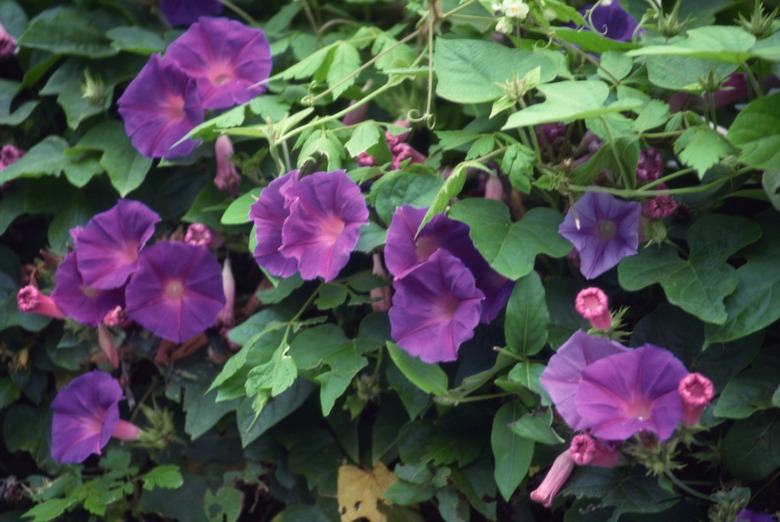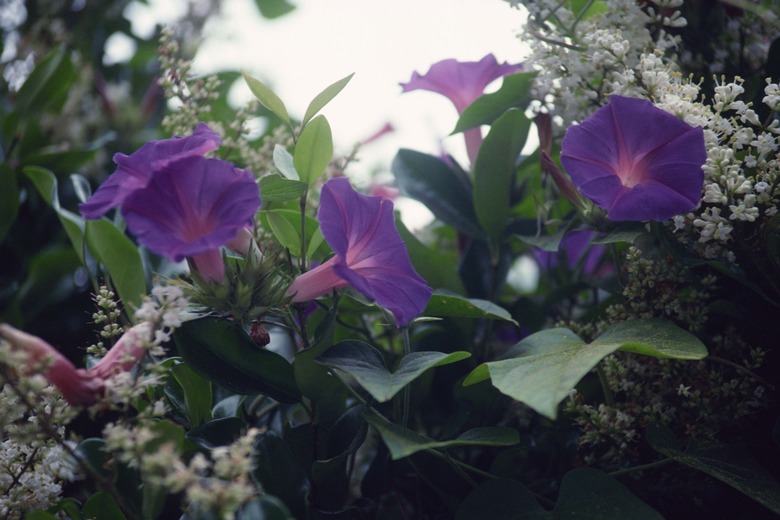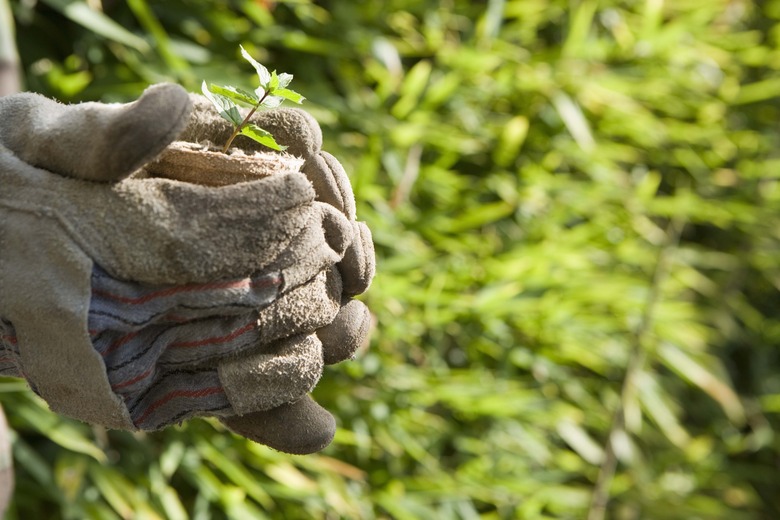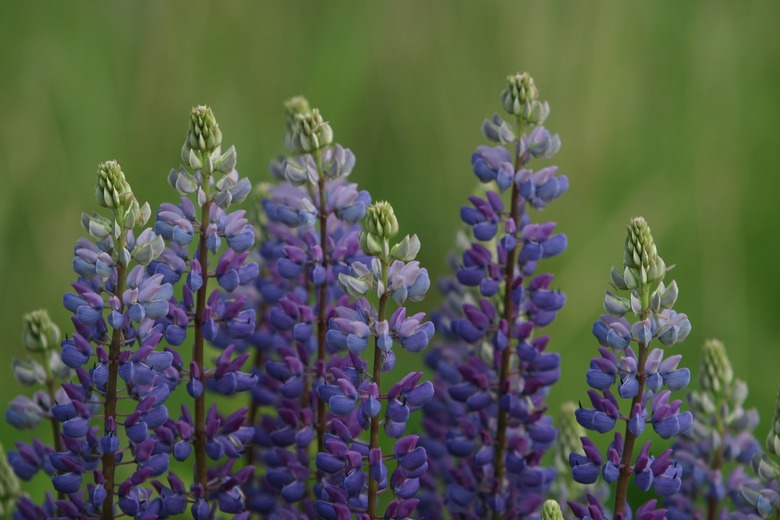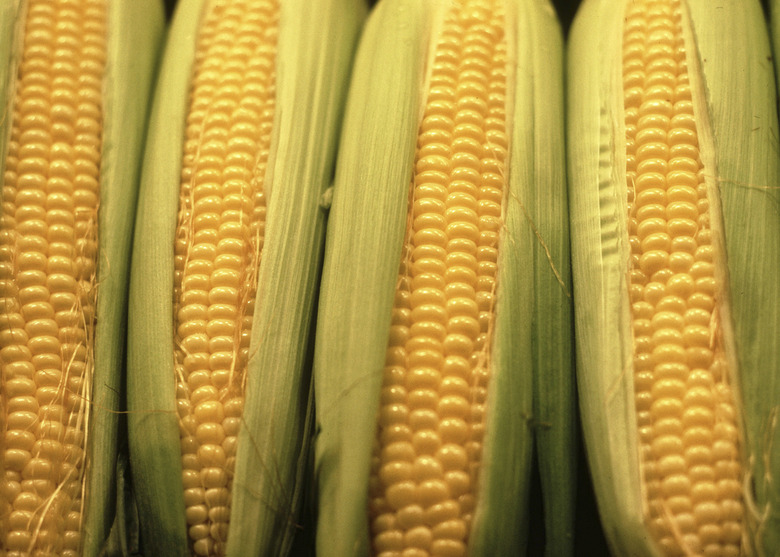Examples Of Annual Plants
In the short span of only one year, annuals grow from seed to flower; they also produce fruit and seed for the next generation. Then having lived their entire life, parent plants die leaving new seeds to sprout and grow the following year. All annuals prosper on this cycle. Flowers bloom each season, while fruits, vegetables and herbs produce their individual harvest at various times throughout the year.
Morning Glory
Morning Glories (Convolvulus) have funnel-shaped, blue flowers with a beautiful yellow star in their center. They are vines that like to climb trellises, and their leaves are emerald green, shaped like hearts. Each winter, morning glories die off, but when the warmth of spring arrives, these fast-growing climbers provide thick, colorful foliage.
- In the short span of only one year, annuals grow from seed to flower; they also produce fruit and seed for the next generation.
Watermelon
Watermelon (Cucurbitaceae) is one of the simple pleasures of summer. This oversize fruit has earned its place at celebratory picnics, and makes a perfect treat for all ages. People have a lot of fun spitting out the seeds too. Competitions are held at county fairs for those who can spit the farthest, or collect the most in one sitting.
Basil
Basil (Ocimum Basilicum) is an elegant herb that complements many culinary masterpieces throughout the world. Aside from having a distinctive flavor in the kitchen, basil is also used for medicinal purposes. It works as a mosquito repellent for those who eat a lot of it, and when steeped for tea, basil eases coughs, reduces fever and induces sleep.
- Watermelon (Cucurbitaceae) is one of the simple pleasures of summer.
- This oversize fruit has earned its place at celebratory picnics, and makes a perfect treat for all ages.
Lupine
Lupines (Lupinus) can be spied from far away, as their lofty, clustered stems cover the landscape. They are tall, with some species reaching heights or 8 feet or more. As California natives, Lupine grows best in coastal regions. Lupine makes a great hedge or border plant, showing off bright blooms in shades of blue, pink and violet.
Corn
Corn (Poaceae or Gramineae) has many uses from its kernel to its husks. People have enjoyed the benefits of corn since Native Americans first introduced it to the world. Multiple products are made from corn including corn syrup, corn starch and ethanol. The strong, fibrous husks are used in weaving and to make primitive dolls. Many people agree that corn is a dietary grain of choice, not only for human consumption, but to feed livestock as well.
- Lupines (Lupinus) can be spied from far away, as their lofty, clustered stems cover the landscape.
References
- Sunset Western Garden Book, Kathleen N. Brenzel, 1998
- Herbs, A Connoisseur's Guide, Susan Fleming, 1990
- The Garden Helper, Annual Plants and Flowers
